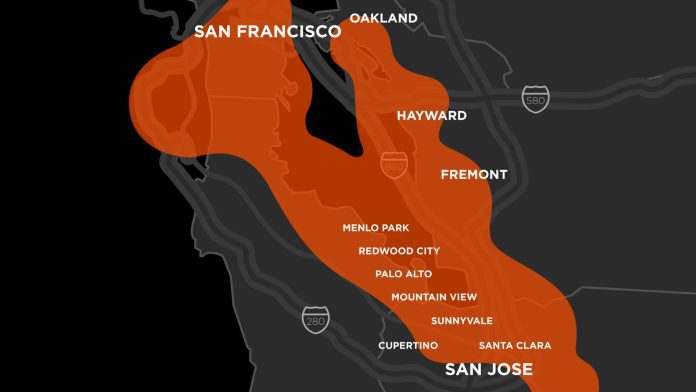Comcast has hooked up the “epicentre of IoT” by making live its LoRaWAN-based machineQ service in the San Francisco Bay Area, in California. The launch, one of 10 new machineQ networks to go live in recent weeks, will stimulate local start-ups and developers to build novel smart city solutions for municipal governments and private enterprises, said the Philadelphia-based telecoms company.
Comcast is now offering LoRaWAN coverage is in major California technology hubs, including Cupertino, Fremont, Hayward, Menlo Park, Mountain View, Oakland, Palo Alto, Redwood City, San Francisco, San Jose, Santa Clara, and Sunnyvale.
“It was a ‘no brainer’ to deliver a dense IoT network in the Bay Area, the epicentre of IoT, because it reduces costs for developers and start-ups in the region and opens up new business cases for the solutions they are building,” said Alex Khorram, general manager for machineQ.
“The early success we’ve had working with solution providers reinforces that there is a need for low-power, cost-effective technologies such as LoRaWAN in the rapidly growing enterprise IoT space here in the US and beyond.”
Marc Pegulu, vice president and general manager of Semtech’s wireless and sensing products, pointed to the use of long-range, low power (LPWA) LoRaWAN to “solve daily challenges in global cities.” He said: “Developers are able to create LPWA IoT applications that will provide the community with smarter services. Semtech’s LoRa technology and machineQ’s connectivity allow enterprises to develop diverse use cases.”
Comcast first announced machineQ in 2016 as trials in Philadelphia, the San Francisco Bay Area, and Chicago, and in 2017 began rolling out the LoRa-based service to businesses and municipalities in Atlanta, Baltimore, Boston, Denver, Detroit, Indianapolis, Miami, Minneapolis, Oakland, Pittsburgh, Seattle, and Washington DC.
ABI Research says IoT revenues from 12 well-established smart city applications, including metering, parking and street lighting, will grow from around $25 billion in 2017 to $62 billion in 2026, at a compound annual growth rate of 11 per cent per year.
The LoRA Alliance claims there has been more than 100 per cent growth in the number of public LoRa networks in the past 12 months, from 31 live networks to 67. By contrast, the GSMA said in February that 23 carriers had so far launched 41 licensed cellular IoT networks, including NB-IoT and LTE-M networks.
Unlicensed networks, mostly based on LoRa and Sigfox, make up two-thirds of LPWA networks today, according to a study of 100 LPWA networks by IoT research firm ON World. A third of the total network deployments are geared towards smart city applications, the report found.
Comcast recently announced new machine customers across a range of industries, including asset tracking, geo-location, water metering, facilities management and pest control. It is also working with providers in the agriculture, energy, retail, and smart cities industries.

